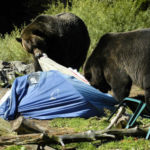Surviving a Cougar Encounter
The cougar is a predatory wild cat most common to the American continent. Their natural habitat ranges from the Canadian Yukon to the southern Andes of South America. Secretive and largely solitary by nature, the cougar is considered to be a nocturnal hunter. However daytime sightings are increasing. Normally their prey is smaller less aggressive animals. Until the late 1980s human and cougar conflicts were relatively rare. However, as humans take up more and more space on the continent human clashes with cougars increase. The cougar other wise known as a mountain lion is the second largest wild feline in the world and quite capable of killing or maiming human beings if confronted.
This is not an animal you want to run into in a bug out, hiking, or camping situation and even less so in your own backyard. Knowing how to react can save your life and perhaps prevent serious bodily injury. The featured article from Paula Wild contains 7 methods of avoiding conflict with this dangerous feline should you encounter one. Paula Wild is the author of the book The Cougar: Beautiful, Wild and Dangerous in which she relays the stories of those who survived cougar attacks.
Cougar attacks: Seven ways to survive
I would advise additional precautions such as rising to a standing position if you are not on your feet when the cat comes into view never crouch down or look like prey.
Show no fear nor curiosity if you see a cougar kill another animal use the time it is distracted to slowly move out of range. A difficult instruction to follow I might add if that other animal is a pet. Small dogs and housecats are a favored prey by this hunter. If you have your pet with you when you come upon a mountain lion picking up your pet backing away noisily is perhaps your best option to avoid attack.
But if attacked this is one animal with which you do not want to play dead. Fighting back is your best option for surviving if you are unable to avoid. So is always being in a group while outdoors in the wilderness or rural neighborhoods where there have been sightings, as they are lone hunters they are less likely to approach a group
. Shelter livestock and bring in pets at night in these areas as well.
 This is an aggregated site. Please be aware some of the sites we link you to could have pop ups. We have no control over them. However, we will never link you to a site that requires you to make any purchase to view the blog.
This is an aggregated site. Please be aware some of the sites we link you to could have pop ups. We have no control over them. However, we will never link you to a site that requires you to make any purchase to view the blog.
Please read our disclaimer. We provide you with information from various sites all over the world. The author’s expressed opinion isn’t necessarily that of The Prepared Page or its staff. Our intent is to bring you the information. Use your common sense and your own best judgment when using any information contained within the blogs.
While you’re here check out some of those other posts you may find them interesting!!!
Some posts may contain affiliate links








